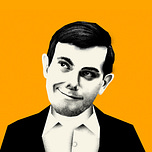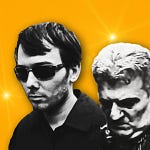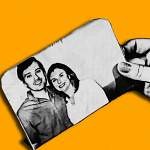Are there any other dorks out there who read or watched the X-Men, the obvious superhero comic of choice for awkward gifted kids? Well, if you did, perhaps you remember how Professor Charles Xavier, a powerful telepath, used a device called Cerebro to amplify his abilities globally. That’s kind of how Twitter worked for Martin Shkreli.
Before Martin, as CEO of Turing Pharmaceuticals, jacked up the price of a toxoplasmosis drug by 5,000 percent in 2015, he had about 4,700 Twitter followers, according to a screenshot captured by the Internet Archive. No doubt fueled by his surge of notoriety, that number rose to 12,900 within three weeks of the New York Times story exposing the price hike in September 2015.
Then over the ensuing year and three months, long after his 15 minutes of infamy should have been up, Martin’s following grew by more than 14 times. By the time he was kicked off the platform in January 2017 for sexually harassing journalist Lauren Duca, he had at least 184,000 followers.

Sure, it’s possible he could have bought followers. Also we can safely assume at least some of his followers were bots (as is the case with any sizable Twitter account). But overwhelmingly, it seemed the rapid expansion of his social media footprint was real — and driven purely by himself. Celebrities argued with him, his tweets often went viral, and journalists were drawn to his account like moths to a flame.
What kept him in the headlines all those months after he jacked up the Daraprim price was hardly a public sense of civic duty and a desire to fix the drug industry. It was his magnetic presence on Twitter — his personal Cerebro extending his wild, weird, intensely polarizing, sometimes hilarious and sometimes cringe-inducing personality to every corner of the internet.
On a social media platform where everyone was focused on building a “brand,” he became a delightfully shocking counterpoint: a person whose only brand was loudly disrupting other brands, being an attention whore in order to savage other attention whores, speaking the unspeakable, and giving zero f**ks. In that sense, his appeal was not dissimilar to Donald Trump’s, who also nurtured a loyal following by regularly inflicting horror on liberals and “social justice warriors.”
Over drinks one night at a restaurant near Manhattan’s Union Square in 2017, I quizzed Martin about his trolling habits. He also saw a likely resemblance between his own “shi*t posting” and Trump’s. “We both want no one to care and everybody to read it, to say what we want but not be responsible for it,” Martin told me. His comment struck me as refreshingly honest, even if it was not morally compelling.
Like Trump, and maybe also a bit like the world’s richest man, Elon Musk, Martin relished using his Twitter for all kinds of bizarre stunts, often purely to annoy people. He augmented his antics and further grew his fan base by live streaming himself from his apartment daily, which encouraged people to develop one-sided emotional attachments to him.
In addition to trolling journalists, celebrities and politicians, he created preposterous fake narratives, like claiming to have offered Kanye West $10 million for exclusive access to The Life of Pablo (a nod to Martin’s Wu-Tang Clan album controversy), just to see if they would get traction in the press. (They did.)
He also played off his public image by “invading” various online interest groups, like college meme pages and Magic the Gathering card collectors. Both seemingly amused and annoyed by the media’s focus on following his every move, he once groused to a reporter who called him during one of his live streams: “If I went to the bathroom right now and took a sh*t, would you cover that?”
The reporter replied that it would depend on whether Martin wanted to live stream himself taking a sh*t.
Martin also discovered that he could further torment reporters, and draw them even more obsessively into his ridiculous social media vortex by blocking them. Few journalists will admit to being bothered by this childish form of rejection — but the amount of time they spend on social media talking about being blocked, and trying to make jokes about it, strongly suggests that they are.
Once, after Martin did an interview on BloombergTV in 2016 and was making his way back out of the building, a health editor from the news team pounced on him and began questioning him aggressively. What the editor wanted to know, especially badly, was why Martin had blocked him on Twitter.
Martin found the ambush so uncomfortable that he threatened…












